In my travels, I’ve encountered road surfaces both comforting and ghastly. Nothing beats a straight, flat stretch of newly paved asphalt. It’s like a breath of fresh air, a sigh of relief. But Seattle has hands-down the worst roads of any city I’ve ridden in. If you doubt me, just take Airport Way S. to Georgetown on a Stella with a chopped seat. Let me know if all your teeth are still attached when you arrive.
I’ve been ruminating on my least favorite road surfaces, partially because I find it gratifying to keep lists and partially because I thought it would make a good safety article.
Here are my top five, in no particular order:
- Potholes
- Loose Gravel
- Wet Leaves
- Construction Plates
- Drawbridges
Luckily, I encountered all five of these hazards on my brief commute this morning and photographed them just for you!
1. Potholes
These hiccups in the pavement range from irritating to life-threatening. Potholes are a given in any city, but there’s something feral about Seattle potholes. They’re a nasty breed, filled with murky water, and they sneak up on you. The rifts in the waterfront pavement have their own zip codes. You ride down into them and then ride back out, with enough time in between to send a post card.

What makes potholes so dangerous is that you hit them one wheel at a time, making for a highly unstable ride. In my (very personal) experience, hitting the brakes mid-pothole is a oneway ticket to Pavementsville. Of course, braking is often an inexperienced rider’s default response.
The best plan of action is usually to swerve and avoid, if you have time and the conditions around you are conducive. If you spot the hole too late and it’s unavoidable, go straight at it with intention and gently accelerate out of it, holding your handlebars firm and straight. The front tire will want to turn, throwing you off balance when you climb out of it.
Another disconcerting feature of potholes is their questionable content; you never know what’s inside them. Filled with rainwater? Oily Garbage Day leakage? Construction crud? Critters? We may never know. Do your darndest to bypass them.
2. Loose Gravel
Some tires are better than others on loose gravel, but it’s a surface engineered specifically for scooter wipeouts. Unless you’re riding a Ruckus or you have a death wish and formidable crashwear, it’s best avoided.
My informal survey found that many non-collision wipeouts involve loose gravel. Gravel is plentiful in the urban environment, and even more so in the spring when rain washes it out of hiding and scatters it across the road, along the curb and around industrial areas where the crushed variety is used in lieu of asphalt.
It collects in corners and turns, where it’s most dangerous, and sneaks up on you because it’s the same color as the street. It compromises your traction, and when you lean around corners you’ve already got less rubber in contact with the road. Combining speed, turning and loose gravel is a really bad idea.
There is one nasty patch of gravel smack in the middle of my commute, and it was so hair-raising that I’ve changed my route altogether. It’s the middle of a u-turn route; you can’t turn left so you have to take three quick rights instead. At the bottom of a terribly steep, short hill, gravel is peppered across the right turn path onto a street with oncoming traffic and parked cars.
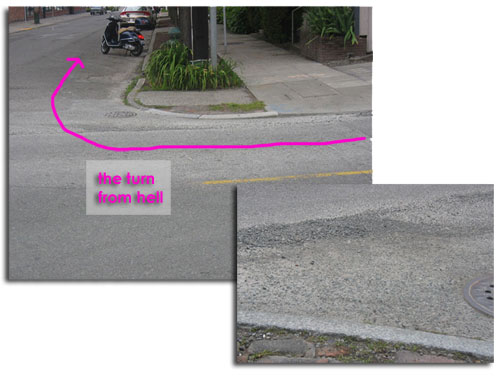
With four big wheels and two tons of steel, the peril doesn’t even register. But it’s nearly impossible to avoid braking while going into this turn, and cars tail impatiently down the hill. If I’m forced to go that way, I come to nearly a full stop before turning, and then accelerate carefully through the turn. If I make the turn too wide, I’ll collide with oncoming cars.
This whole mess is right next to the freeway, so people are in a hurry. It’s one of the few stretches of road where my scooter elicits horn blowing and unsavory hand gestures. I ignore the cage drivers; I’d rather have them flipping me off than pulverizing me into the pavement after I go down, which is sure to happen unless I tread lightly.
This particular route ends with the Nightmare on Mercer St. at the top of the hill – the fateful red light that killed the Frankenstella every time and challenges even a healthy manual transmission.
Now I avoid the whole mess – the Turn from Hell, the Nightmare on Mercer St., all of it. I take the scenic route home, nearly doubling the distance, but it’s a beautiful ride through the Lakeview Greenbelt and the peace of mind is worth every second of those five extra minutes.
3. Wet Leaves
The Angel of Death walks the autumn streets ominously, leaving a wake of wet leaves in its path. They gather along the sides of the road in slimy piles, a seemingly innocuous part of the October landscape. Fallen leaves are everywhere in Seattle – and we don’t have regular street cleaning. I never had a problem with wet leaves in Boston or New Haven (though I was more concerned with ice). Boston has nightly street sweeping so I rarely even noticed them. But in Seattle they sit until they decompose or are swept away by the rising floods. They are dark, slippery, and very, very mean.
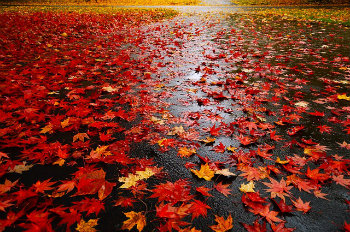
The tumble I took on the Frankenstella last fall involved wet leaves and a torrential downpour. There was so much rain, in fact, that I5 was flooded and closed that morning. But I missed the memo RE: The End of the World, and was riding to work unaware, creeping down Republican with an SUV shoved up my tailpipe. He was flashing his brights at me in the dark rain because I was taking too long getting to the next stop sign. I used three-quarters of a second to check my mirrors, fearing he was overtaking me, and found myself hub-deep in a slick patch of rotting foliage.
I felt the bike slide in slow motion, and knew there was no way to stop it. I prepared myself for the inevitable, putting the bike down away from the engine and throttle to minimize the damage. The SUV blew its bestial horn at me and drove halfway up on the sidewalk to pass me and my felled scooter. We were clearly ruining his otherwise flawless morning.
Both the Frankenstella and I were unharmed, though the leg shield did leave a beefy bruise on my left calf and I can still feel the bump from eight months ago. There is one plus side to wiping out on wet leaves – they’re soft. They cushioned my body andthe Frankenstella’s. But it was still a rough start to my Monday morning.
Moral of the story – you can’t defy physics and stop on wet leaves. Another danger it’s best to simply avoid. This means riding toward the center of the road as much as is safe. If you do hit wet leaves, well — I pretty much guarantee you’ll only do it once.
4. Construction Plates
I don’t know what’s worse – the disrupted pavement caused by bulldozers or those steel plates they drop on top for “safety.” You’ve probably seen them – they’re often flanked by enormous orange signs that say “Motorcycles use EXTREME caution!”
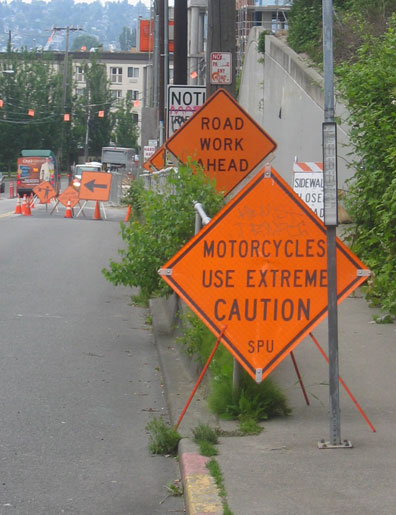
In case the plates weren’t sketchy enough alone, they are often surrounded by mounds of clumpy asphalt before and after them. Their saving grace is that they’re usually well-marked (or should be) and cars slow down near construction and pay closer attention, so you’re less likely to be run over as you de-throttle to take stock. You can often ride around them all together as they rarely take up the entire lane.
Definitely do your best to avoid these in the rain as they offer zero traction and can be quite slippery, especially when covered in forklift grease.
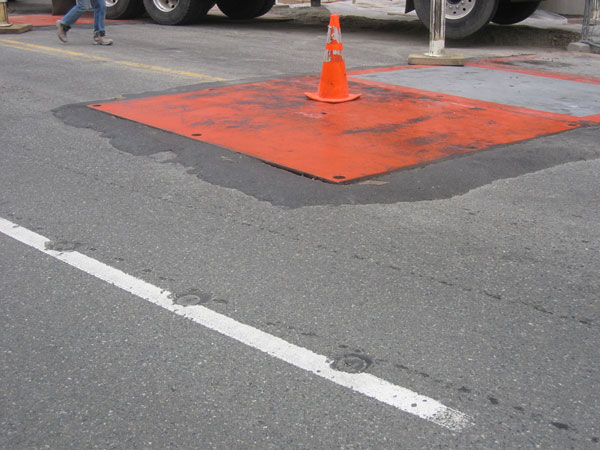
I get chills just thinking about it.
If you can’t go around a plate, ride directly onto it with your wheels straight, and don’t touch the brakes. If you have to slow down, brake before the plate. Keeping your wheels straight and your scooter upright not only helps your balance, it gives your tires maximum road contact for better traction and puts perpetual motion on your side.
5. Drawbridges
Last but not least is our good friend the Drawbridge. You may never have to ride over bridge grating. But I live in a land of lakes, and it’s nearly impossible to go anywhere in this city without crossing the Fremont, Ballard, Montlake or University Bridges. On a good day I cross all four, multiple times.
Bridges are relatively safe; the grids have teeth for traction and even in the rain they’re not terribly hazardous (though the signs are accurate: they are more slippery when wet). Your own fear is probably the biggest danger when crossing a bridge.
When I first started riding on them I dang near suffered a nervous breakdown. The grooves take your wheels hostage and it feels like you’re totally out of control. If you panic and over-correct your path, you’ll make your bike unstable. Fight the urge to force your scooter to go exactly where you want it to, and just concentrate on staying upright, moving forward, and riding it out.
I’ve found preparation makes all the difference. I have a bridge ritual I run through when I know I’m about to cross. Before the bridge, I get in the right lane so there’s only traffic on one side of me. This allows me some wiggle room, should I need to wiggle. Never change lanes on the grating unless you’re seeking a nice dip in the lake with your scooter.
As I near the bridge entrance, I survey the traffic ahead. If the cars are slowing down on the bridge, I back off the throttle and leave lots of space, hoping by the time I get to the grating the traffic will have cleared. Slow speeds feel unsteady, and stopping on the grate can be daunting. Ideally, I want to accelerate and ride straight across in one fell swoop at 35 mph., which appears to offer the best traction on my particular tires.
When I enter the grating, I avoid the seam and ride straight on. The Fremont bridge has a fat seam that feels slippery if you get caught in that groove. I don’t know if it’s any more dangerous than the rest of the bridge, but it feels scary as hell and it’s hard to get out once you’re committed. So I aim for dead center of the lane.
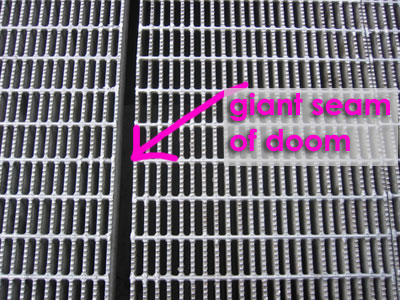
Once I’m on the grating, I relax, sit up straight, and look way past the bridge, focusing on the horizon. If you take the Motorcycle Safety Class – and you’d better – they teach you about “tracking”, a neat human mechanism that aligns your balance and reflexes with your vision.
Tracking can work for or against you. If there’s something you don’t want to hit and you stare at it, you’ll steer yourself right into it. Your bike goes directly where your eyes focus. So on the bridge, I look upward and far ahead, which aligns my body with upright and forward movement – both good on two wheels.
If you have to stop on the bridge, use your front and rear brakes together very gently, and brake as gradually as possible. I put my feet out a little earlier than usual if I need to stop on the grating, especially in the rain, which can make it feel more slippery. The interesting part of stopping on the grating for the first time is that once you put your feet down, you feel how good the traction is, and it gives you more confidence the next time you cross it at speed. Although it feels like riding over oily glass, it’s actually got more grip than regular pavement. You just have to surrender your control issues at the gate. Challenging, I know.
If you’re riding two-up, it might be worth telling your passenger ahead of time not to make any sudden movements when you cross the bridge. If both of you sit straight and still, you’ll breeze right over it – and they’ll get to enjoy the beautiful view.
The dismount is the final step, and I give it a touch of gas to exit the bridge smoothly. Then I take a deep breath. See? It’s cake!
Whew. All this talk of crappy street surfaces is not making me look forward to my commute.
Ride safe! It’s a jungle out there.
 Scooter Lust two wheels, one love
Scooter Lust two wheels, one love
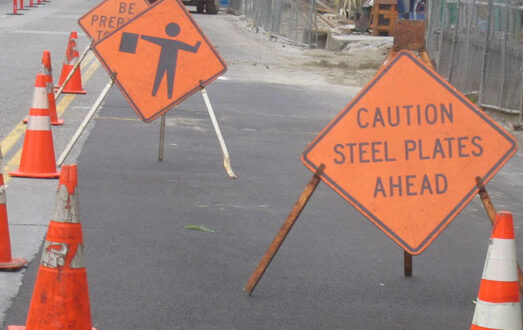
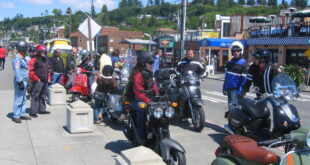
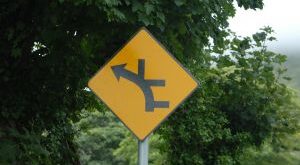
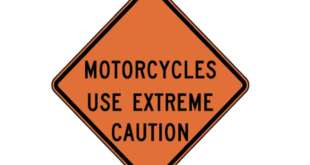
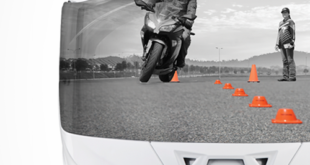
Very nice article! It’s very easy to forget about these everyday hazards (I’m a roadrashed veteran of the gravel trap myself!). Your whimsical writing style is a pleasure to read; please keep up the good work!